Sure, chocolate can be exquisitely decadent. But it can also be so much more than a delicious confection. As chef Jason French told Bon Appétit, “If you let go of what your preconception of chocolate is — which for 99.9 percent of the people is a candy bar — it becomes another culinary weapon in your larder.”
Alice Medrich, who is credited with bringing the chocolate truffle to the United States in the 1970s, says that when you taste chocolate without all the sugar and fillers included in most candy bars, you become aware of its deep, earthy, nutty, and fruity flavors. She compares chocolate to wine and explains that, like grapes, chocolate has a terroir that reflects the taste of the soil and climate where it’s grown.
“Sometimes you’ll get some tropical fruit flavors or citrus flavors or cherry or even little hints of coconut,” says Medrich, author of Seriously Bitter Sweet. “There are hundreds of flavor components in chocolate, and they can go to the sweet or the savory really easily.”
In savory dishes, she says, the taste of chocolate is nuanced. She recommends adding chocolate to meaty dishes, like chili and spaghetti bolognese: “A tiny bit of dark chocolate melted into the sauce, or a little bit of cocoa, adds an undertone of flavor, something that people might not even identify as chocolate when eating the dish.”
Medrich also loves roasted cacao nibs — broken pieces of raw cacao seeds, which are processed to make cocoa and chocolate — and adds them to salads for a crunchy element. “It not only goes with some of the more bitter greens, but also with fennel, olives, and Parmesan,” she says.
Cacao nibs, unsweetened cocoa powder, and high-percentage dark chocolate also have some health benefits. Cacao has antioxidant properties thanks to its flavonoids, phytochemicals that are also found in tea and red wine. It’s also associated with improved mood because it boosts serotonin levels.
Still, we prefer to think of dark chocolate as an occasional treat and useful culinary tool, not necessarily a superfood. (For more info on the funding for chocolate research, go to “Is Dark Chocolate Actually Good for Us?”.)
With a little knowledge about choosing the healthiest chocolate, you can use it to add an extra dimension of flavor to some of your meals. Below, you’ll find recipes for savory dishes and a trio of tasty desserts.
Dark-Chocolate Cheat Sheet
In search of the healthiest and best-tasting dark chocolate, we culled these buying tips from our expert sources.
- Aim for a high cocoa percentage — ideally, more than 80 percent. The higher the cocoa, the more likely the chocolate contains healthy flavanols. The rest of any chocolate is filler, primarily sugar, dairy, and fat.
- Seek out chocolate made from the best cacao beans, which come from countries closest to the equator, including the Ivory Coast and Ghana in Africa, and Ecuador and Peru in South America.
- Look for cocoa, cocoa mass, or chocolate liquor first on the ingredients list. The fewer the overall ingredients, the less processed the chocolate is likely to be, and the healthier it is for you.
- Support fair-trade chocolate, which certifies that fair prices were paid to the cacao producers in developing countries.
- Opt for organic and non-GMO chocolate produced without chemical fertilizers, pesticides, and herbicides.
- Skip Dutch-processed cocoa, which uses alkalization to remove bitter flavors; it also damages antioxidants.
- Steer clear of any chocolate that has sugar listed as the first ingredient.
- Watch out for chocolate containing cheap vegetable oils instead of cocoa butter.
- Choose chocolate made from humanely harvested cacao. Chocolate has a long, sad history of slave and child labor.
Chicken Mole
Mole is a traditional Mexican sauce that has many variations and usually takes hours to cook. This adaptation is quicker but still silky and flavorful.
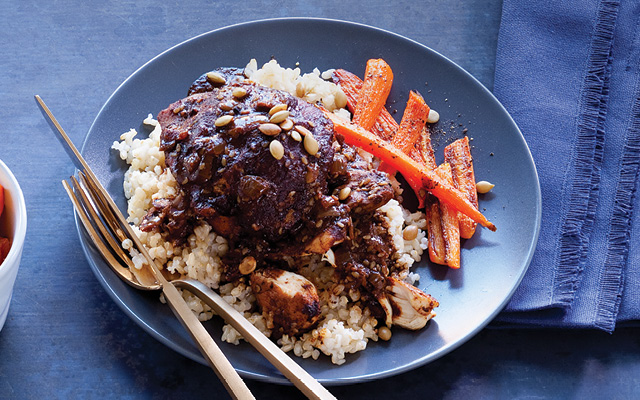
Makes four to six servings | Prep time 20 minutes | Cook time 1 hour
Ingredients
- 1 tbs. extra–virgin olive oil
- 1 chicken (about 3 to 4 pounds), cut up into pieces
- 2 1/4 tsp. sea salt, divided
- 1 tsp. freshly ground black pepper
- 3 cloves garlic, smashed
- 1 cup diced onion
- 1 cinnamon stick
- 1/4 cup sesame seeds
- 3 tbs. ground ancho chilies or paprika
- 1 tbs. ground coriander
- 2 tbs. almond butter
- Zest and juice of 1 orange
- 2 cups chicken broth
- 2 1/2 oz. Mexican chocolate (80 to 85 percent cocoa), coarsely chopped
- 1/4 cup toasted pumpkin seeds, for garnish
Directions
- Preheat the oven to 325 degrees F. Heat the olive oil in a large skillet. Season the chicken with 2 teaspoons of the salt and pepper, and sear for three to four minutes on each side. Transfer to a baking pan (reserving the oil and drippings), cover with foil, and roast for 15 minutes.
- For the sauce, add the garlic and onion to the drippings in the large skillet, and sauté until they begin to soften. Add the cinnamon stick, sesame seeds, spices, and remaining 1/4 teaspoon salt, and sauté until fragrant. Add the almond butter, orange zest and juice, and chicken broth, and bring to a simmer, stirring frequently. Cook until slightly thickened, about five to eight minutes, then stir in the chocolate. Remove the chicken from the oven and pour the sauce over it.
- Lower the heat in the oven to 275 degrees F, and roast the chicken in the sauce for 10 minutes or until it is cooked through. Garnish with the pumpkin seeds, and serve over brown rice, quinoa, or millet.
Black Bean Chili With Chipotle and Dark Chocolate
Spicy and smoky chipotle pepper pairs well with dark chocolate.
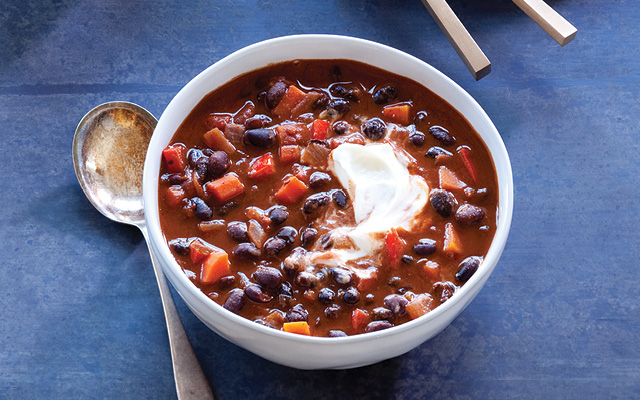
Makes six to eight servings | Prep time 15 minutes | Cook time 40 minutes
Ingredients
- 1 tbs. extra–virgin olive oil or ghee
- 1 cup diced yellow onion
- 1 cup diced carrots
- 1 cup diced red bell pepper
- 3/4 tsp. sea salt, plus more to taste
- 1/2 tsp. ground cinnamon
- 1 tbs. ground coriander
- 1 can (14.5 oz.) fire–roasted crushed tomatoes
- 3 cups vegetable broth
- 4 cups cooked black beans (or two 15–oz. cans, drained and rinsed)
- 1 to 2 chipotle peppers in adobo sauce, diced
- 2 oz. dark chocolate (80 to 85 percent cocoa), coarsely chopped
- Full–fat crema, sour cream, or Greek yogurt, for serving (optional)
Directions
- Heat the oil in a large saucepan over medium heat, and sauté the onions, carrots, and bell peppers until softened.
- Add the spices and salt, and continue to cook until the vegetables are caramelized. Add the tomatoes with their juice to deglaze the pan.
- Then add the broth, beans, and chipotle peppers and bring the chili to a simmer for 10 to 15 minutes.
- Stir in the chocolate until melted. Taste and adjust seasoning as necessary.
- Serve the chili with a drizzle of crema, sour cream, or Greek yogurt.
Roasted Butternut Squash With Cacao-Peppercorn Cream
Cacao-infused cream pairs nicely with warming spices such as black pepper, cumin, and cinnamon, and it complements a variety of veggies, including carrots, sweet potatoes, and even green beans.
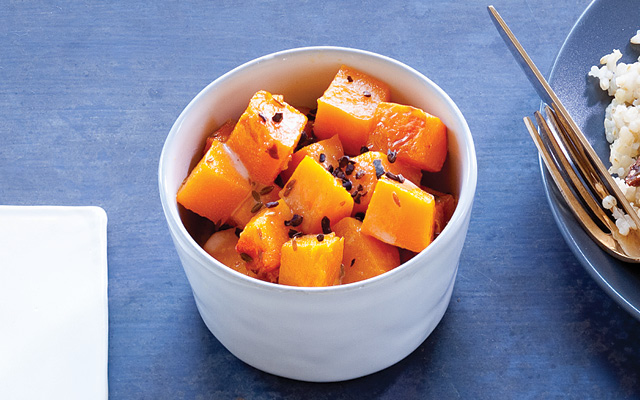
Makes four to six servings | Prep time 10 minutes | Cook time 25 minutes
Ingredients
- 6 cups cubed butternut squash
- 1 tbs. coconut oil, extra–virgin olive oil, or ghee
- 1 tsp. sea salt, plus more to taste
- 1 tsp. whole cumin seeds
- 1 cup heavy cream or coconut milk
- 1 tsp. black peppercorns
- 1 tbs. cacao nibs
Directions
- Heat oven to 400 degrees F.
- Toss the cubed squash with the oil, salt, and cumin seeds, and roast for 15 to 20 minutes, until caramelized. While the squash is roasting, prepare the cream by bringing it to a low simmer in a small saucepan.
- Crush the peppercorns and cacao nibs with a heavy skillet and add to the cream. Allow the cream to barely simmer over low heat for 10 more minutes. When you are ready to serve, strain the cream.
- Taste and adjust seasoning as necessary, then pour the cream over the squash.
BBQ Sauce With Cocoa and Molasses
Commercial BBQ sauces are often high in sugar, usually in the form of high-fructose corn syrup. This recipe balances the sweetness of caramelized onions, tomatoes, honey, and molasses with the earthiness of cocoa powder. This sauce is best made a day in advance to allow the flavors to meld.
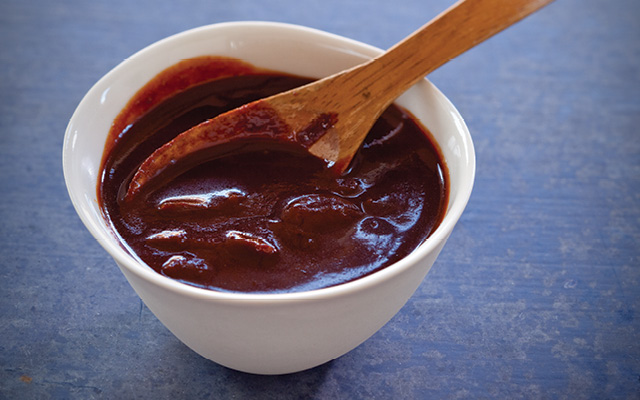
Makes 5 cups
Ingredients
- 1 tbs. olive oil
- 1 cup diced onion
- 1/2 tsp. salt
- 1 tbs. minced ginger
- 1 jalapeño, minced
- 1 can (15 oz.) tomato sauce
- 1/4 cup tamari
- 1/4 cup honey
- 1/2 cup molasses
- 1/4 cup rice-wine vinegar
- 4 tbs. unsweetened cocoa powder
- 1 tbs. smoked Spanish paprika
Directions
- Heat the olive oil in a small saucepan over medium heat, and add the onions and the salt.
- Caramelize the onions until golden brown, then add the ginger and jalapeño, and cook until tender.
- Add the remaining ingredients and simmer until flavors are well blended, about 20 minutes.
Coconut Chocolate Truffles
Chocolate truffles are traditionally made with cream, butter, and egg yolks, but this simple version uses coconut milk and coconut oil. Try different flavorings such as orange or lemon zest, cinnamon, cardamom, or even a pinch of cayenne pepper.
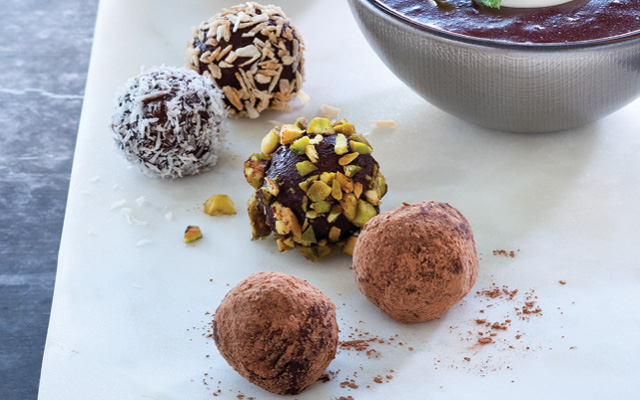
Makes 18 to 24 truffles
Ingredients
- 5 oz. coconut milk
- 1 tbs. coconut oil
- 1-inch piece of vanilla bean, split
- 5 1/2 ounces dark chocolate (70 to 80 percent cacao content), broken into small pieces
- Cocoa powder, shredded coconut, or chopped pistachios, for decorating
Directions
- Simmer the coconut milk in a small saucepan with the coconut oil and vanilla bean for five minutes. Allow to cool for three to five minutes to allow the vanilla to flavor the milk. Strain the milk.
- Place the chocolate in a mixing bowl, and pour in the warm coconut milk. Stir constantly with a rubber spatula to melt and incorporate the chocolate evenly as it melts.
- When the chocolate mixture is smooth, chill the mixture in the refrigerator until set, about two hours.
- Scoop the chocolate into small balls, roll in cocoa powder, shredded coconut, or chopped pistachios, and store in the refrigerator until ready to serve.
Chocolate and Cacao Nib Gelato
Cacao nibs add crunch while a dash of cayenne adds some subtle heat.
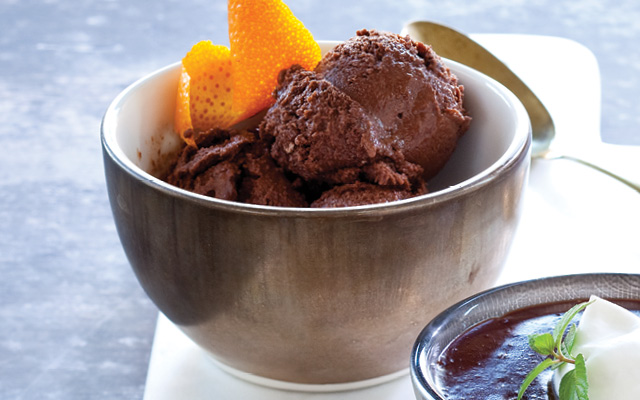
Makes about 1 quart
Ingredients
- 2 cups whole milk
- 3 1/2 ounces dark chocolate (85 percent cacao content), broken into small pieces
- 1/2 cup honey
- 4 egg yolks
- 1/2 cup unsweetened cocoa powder
- 1/8 tsp. cayenne pepper
- 1/3 cup raw cacao nibs
Directions
- Heat the milk just until it begins to boil and turn off the heat. Place a small bowl over the warmed milk and use it as a double boiler to melt the chocolate, stirring gently but constantly as it melts.
- In a separate bowl, beat the honey and the egg yolks together until they are light yellow and creamy. Slowly stir in the warm milk, melted chocolate, cocoa powder, and cayenne.
- Chill the mixture for at least six hours, and freeze in an ice-cream maker according to the manufacturer’s directions.
- When the ice cream is almost set, fold in the cacao nibs. Transfer the gelato to a container and freeze for about an hour before serving.
Vegan Dark-Chocolate Pudding
This pudding is rich, satisfying, and dairy-free. Experiment by adding a bit of grated orange zest, a little vanilla or almond extract, or a tablespoon of peanut butter or almond butter.
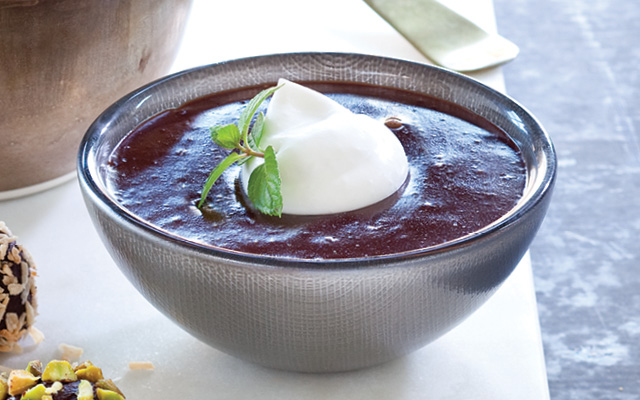
Makes four servings
Ingredients
- 1 can (13.66 oz.) coconut milk
- 1 1/2 tbs. potato starch
- 1/4 cup sugar
- Pinch of salt
- 3.5 oz dark chocolate (70 to 80 percent cacao content), coarsely chopped
- 1/2 cup chilled coconut milk, for garnish
Directions
- Gently heat the coconut milk, potato starch, sugar, and salt in a heavy saucepan.
- When the milk is warmed and beginning to thicken, gently stir in the chocolate until melted.
- Divide into individual serving dishes and chill for about an hour.
- Meanwhile, whip the chilled coconut milk with an electric mixer, and spoon on top of the chilled puddings.
Chocolate Choices
Unlike money, chocolate actually grows on trees. The seeds found in the pods of the cacao tree (Theobroma cacao) are processed in different ways to create a variety of foods:
Cacao nibs — Cacao nibs, which taste somewhat like coffee beans, are the broken pieces of cacao seeds left after the outer shells are cracked and removed. Available raw or roasted, nibs are the least-processed edible form of chocolate.
Cocoa — Cocoa is created by grinding the nibs into a mash called “chocolate liquor.” Cocoa butter and unsweetened cocoa powder are products of the liquor.
Unsweetened baking chocolate (bitter chocolate) — Made nearly entirely of cocoa butter and cocoa solids, unsweetened baking chocolate is chocolate liquor in its solid form.
Sweet chocolate — Most of the chocolate we eat falls into this category. It always contains cocoa solids (usually in the form of cocoa powder). High-quality chocolate uses cocoa butter as the fat, while low-quality chocolate uses substitute oils. Sweet chocolate contains varying amounts of sugar, but in general, the higher the quantity or percent of chocolate, the lower the sugar. The FDA states that in order for chocolate to be called dark (or even bittersweet or semisweet), it must contain at least 35 percent cacao and less than 12 percent milk solids. Milk chocolate usually has about 10 percent cacao but can have up to 40 percent, depending on the maker. Most nutrition experts agree that chocolate with 60 percent cacao or higher has the most health benefits.
White chocolate — Contains at least 20 percent cocoa butter, as well as sugar and milk, but no cocoa powder. Because it doesn’t contain any cocoa solids, white chocolate doesn’t offer the same nutritional benefits as dark chocolate.
This article originally appeared as “For the Love of Chocolate” and has been updated. It was originally published online on February 19, 2014.
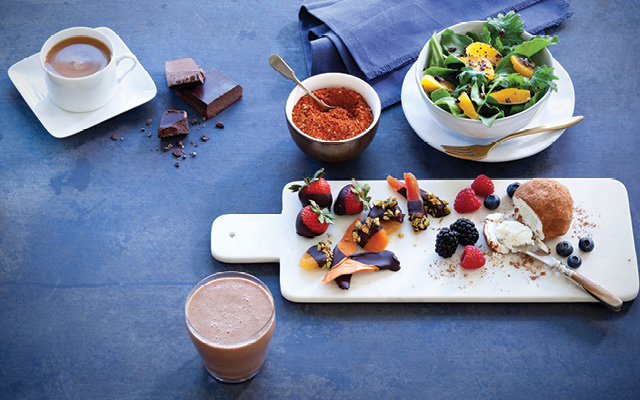
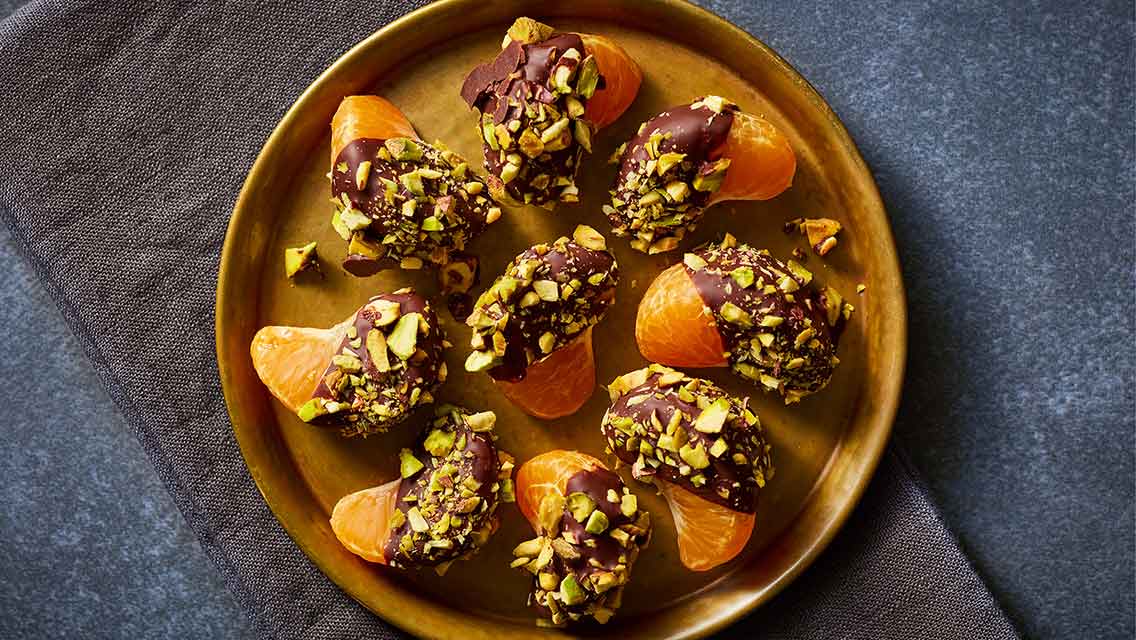
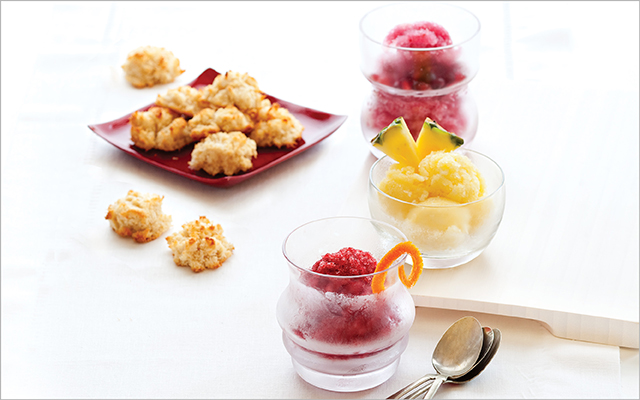
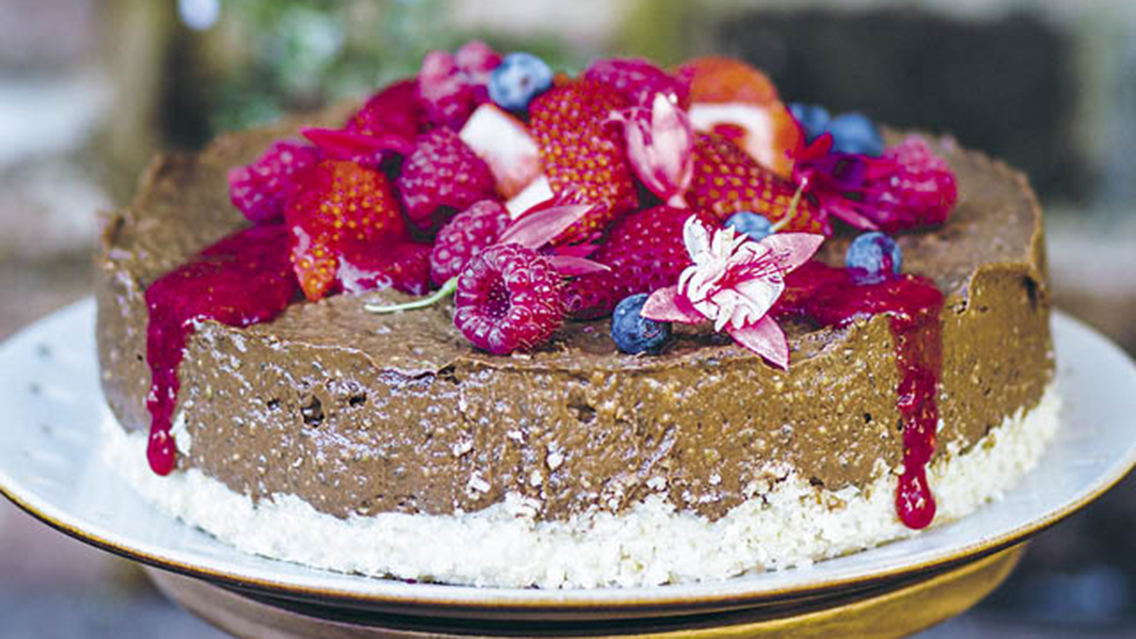
This Post Has 0 Comments